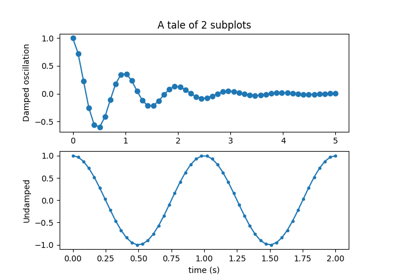


With this I created 3 subplots in an A4 size figure, each of them are 0.6x8.3 width and 0.2x11.7 height. Im creating subplots iteratively, so I dont know ahead of time the width of each one (it gets calculated AFTER plt. All quantities are in fractions of figure width and height, thus they are all float between 0 and 1.Īn example: fig = plt.figure(figsize=(8.3, 11.7)) left and bottom decide the location of your subplots, while width and height decide the size. I prefer to use fig.add_axes() which let you control the size and location of each subplot precisely.

Plt.savefig(f'-subplots.pdf', bbox_inches='tight', pad_inches=0) Because of this, we first need to instantiate a figure in which to host our plot. As the name of the argument indicates, this is applied to a Matplotlib figure. Subplot_abs_excess_height = 0.3*scale # The height of the excess space on the top and bottom of the subplotsįig_width = (cols * subplot_abs_width) + ((cols-1) * subplot_abs_spacing_width) + subplot_abs_excess_widthįig_height = subplot_abs_width+subplot_abs_excess_heightįig, ax = plt.subplots(1, cols, sharey=True, figsize=(fig_width, fig_height), subplot_kw=dict(box_aspect=1)) One of the simplest and most expressive ways of changing the plot size in Matplotlib is to use the figsize argument. Subplot_abs_excess_width = 0.3*scale # The width of the excess space on the left and right of the subplots Subplot_abs_spacing_width = 0.2*scale # The width of the spacing between subplots Subplot_abs_width = 2*scale # Both the width and height of each subplot setting the subplot box_aspect to 1 to keep them square.adding them up to get an absolute figure size,.setting explicit absolute lengths for subplot width/height, the space between subplots and the space outside subplots,.set_title ( r'$, 0 \leq \epsilon \leq 1/2$' ) ax4. Plot miles per gallon against horsepower with other semantics sns.relplot(xhorsepower, ympg, hueorigin, sizeweight, sizes(40, 400). tick_params ( direction = 'in' ) #invert axis ax3. If the value is numeric the size will be the absolute font size in points. set_title ( r'$, 0 \leq \epsilon \leq 1/3$' ) ax1. Help on function plot in module matplotlib.pyplot: plot(args, scalexTrue. plot (,) #Adjust plotting parameters ax1. subplot ( gs, sharey = ax1, projection = 'mantid' ) ax3 = plt. subplot ( gs, projection = 'mantid' ) ax2 = plt. figure ( figsize = ( 12, 5 )) gs = GridSpec ( 1, 4, width_ratios =, wspace = 0 ) ax1 = plt. sqrt ( y ) w = CreateWorkspace ( DataX = x, DataY = y, DataE = err, NSpec = 1, UnitX = 'DeltaE' ) # Plot - note that the projection='mantid' keyword is passed to all axes fig, ax = plt. From _future_ import division import numpy as np import matplotlib.pyplot as plt from mantid import plots from mantid.simpleapi import CreateWorkspace # Create a workspace that has a Gaussian peak x = np.


 0 kommentar(er)
0 kommentar(er)
